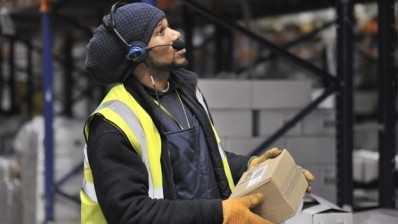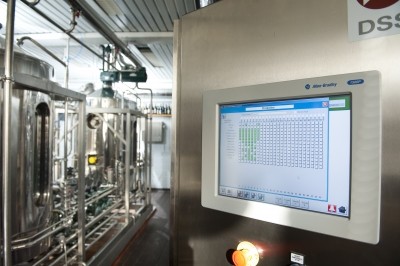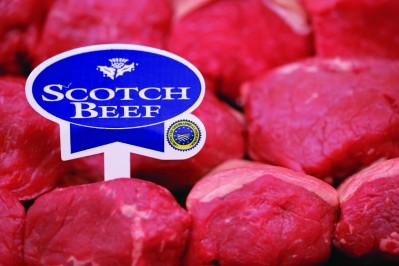Food supply chains to benefit from big data tidal wave

From more-effective demand planning and product development for manufacturers to business analytics for retailers and farm-to-fork traceability at the fingertips of consumers, the grocery supply chain is awash with data that can deliver game-changing benefits. However, many observers believe that it's something of a double-edged sword.
“The greater availability of data is both a blessing and a curse,” says Shaun Bossons, executive vice president of global business development at Trace One. The Trace One platform provides an environment where supply chain partners can collaborate to improve supply chain visibility and develop products for both own-label and brands.
“On one hand, it is possible to know the origins of the smallest ingredient used in a product. On the other, the amount of information that needs to be shared through the supply chain to create food products is creating a data deluge,” says Bossons.
Managing data (Return to top)
Bossons argues that technology is largely responsible for generating data and making it more accessible, but the flipside is that the volume of data in turn demands more technology in order to manage it effectively.
“Humans simply aren't equipped to process hundreds or even thousands of specifications for products without making a mistake, and so specification management, workflow and auditing tools are needed,” he says.
One of the key drivers of data at the retail end of the chain is the growth in e-commerce, which enables retailers to monitor the activity of individual consumers in ways that were simply not possible previously.
“The defining characteristic of e-commerce is, obviously, that it takes place online and therefore means all data related to purchases is automatically captured. Because of this, it's important that retailers make the best possible use of this rich data in their supply chain planning and analytics,” says Tommi Ylinen, vice president of product at Relex Solutions. Relex provides supply chain systems that automate forecasting and replenishment procedures.
“When a customer enters a store, it is virtually impossible to record accurately what they do and which products they pay attention to,” says Ylinen. “However, when they enter your website, it's pretty straightforward to track and log actions.”
An important aspect for a supply chain manager is product views, says Ylinen.
“For a single product it is easy to monitor the number of views in any given day and then record and use this data in the supply chain planning and analytics tool,” he adds. “By analysing the viewing rates, forecasting and supply chain, efforts can be focused on the most important products, ensuring that those are always optimally stocked. This means: reduced delivery times, improved customer experience, and cost savings.”
“You can track someone's digital footprint,” says Dominic Embley of Informance, a provider of software for decision making analytics. “For example, they've been on the same cake page seven times but they haven't bought it. Or if the data shows that 10,000 people looked at that cake and only 1% bought it there is clearly an issue with the way it's being marketed. The opportunities are huge.”
Informance is a partner for business intelligence/data analytics software Qlik, which aims to enable companies to make sense of available data wherever it comes from.
“All companies have a lot of data, but the gap is in what to do with it all,” says Embley. “We provide a layer on top so you can spot a pattern or trend. Qlik can capture data from any source weather, currency, political news in the origin country or demographics across different retail branches. It all feeds in to answer questions like: 'why do people buy lamb burgers in Birmingham but not in Solihull, which is only five miles away?'”
Of course, whether retailers or other players in the supply chain are happy to share customer data with other links is another matter.
“Generally speaking, it's the retailer who has the data,” says Mike Edgett, industry and solutions strategy manager for food and beverage with software supplier Infor. “If it's their store brand they'll spend time looking at it with their manufacturer but I don't know that they'd share that kind of information with other manufacturers.”
Edgett believes that the most likely area for co-operation is in products with a very short shelf-life, because these present the trickiest supply chain challenges.
Embley adds that other types of product can also benefit, although he confirms that short shelf-life products are a key segment. “Some manufacturers are producing 100s of 1000s of products that will be obsolete in five days. From their point of view, they're trying to predict demand for products and in turn for the different components that make up the products. It's about cutting down on waste really,” he says.
Sales analysis (Return to top)
As an example of this, Greencore and one retail customer benefited hugely by deploying the QlikView solution to analyse which wraps and sandwiches were selling out in which stores and which were ending up being discarded.
By making it easier for supply chain teams to analyse the electronic point of sale data in near-real-time and enabling quicker and easier production decisions, the solution delivered an incremental sales boost in three months and 20% more on-shelf availability, as well as reducing waste by 3%.
Improved forecasting accuracy can bring its own challenges along with the advantages, warns Mark Wilkinson, supply chain consultant at Indigo Software, which specialises in warehouse management systems (WMSs).
“With improved data, the manufacturer is able to significantly improve forecasting accuracy and scale manufacturing capabilities accordingly,” says Wilkinson. "However, when doing this, problems can arise because although they get the demand projections right and increase production levels to make enough product, problems occur because the warehouse cannot cope with the extra flows.”
He adds: “A new breed of WMS can use rich data to mirror the forecasting capabilities of manufacturing solutions and allow producers to very accurately forecast the impact of increased production levels on their warehouse operations. This enables contingency plans to be put in place to ensure the necessary extra warehouse or transportation capacity is available.”
Wilkinson argues that WMS is especially important for manufacturers that need to manage demand seasonality, which may result from unpredictable events such as hot weather.
“Being able to capitalise on flexible seasonality opportunities is where a good WMS can have a huge impact, by enabling accurate logistics scenario planning to support a very flexible manufacturing operation,” he says.
A fresh approach to price fluctuations (Return to top)
Fresh produce presents one of the most demanding supply networks of all. In light of this, enterprise resource planning software supplier Greentree is helping Fife-based Ivan Wood & Sons to manage its supply of fresh and prepared fruit and veg to the catering trade throughout Scotland.
While Ivan Wood tries to source produce as locally as possible, seasonality and variety means that the family-run firm deals with suppliers from across Europe. One of the biggest challenges is rapidly fluctuating prices, as Greentree md Harry Mowat explains: “If tomatoes cost £20 one day and £50 the next but you're still quoting £20 to your customer then you're in trouble.
“Greentree offers automated price adjustment, so pricing structures can change on a daily basis. Under their older system they had to update all the sales prices individually, but now it's all automatic and live so the sales person can see prices just for the customer they have on the phone. It wouldn't have been humanly possible before.
“Now, operators can see the live purchase price and the price at which they can sell to each customer. So, loyal customer X might get the list price minus 10% or get a further reduction if they order more than 50 boxes.”
Forecasting is another important feature. "It's absolutely essential so you don't buy too much or, worse, don't have enough stock and so can't meet customer demand. We know everything that anyone has ever bought at any time and that's used in forecasting for investment and also in CRM [customer relationship management] so we know when to make calls,” adds Mowat.
The system also keeps a constant check on stock levels, flagging up when buyers need to reorder to meet the forecast demand.
In comparison with other systems, Mowat says that Greentree provides a system that can be tailored to flag up whatever happens to be important for each business.
In the case of Ivan Woods, the improved quality of information that Greentree provides to sales staff means that the company's prices should always be competitive, without any compromise on the quality of its produce. In addition, automation enables the firm to optimise its service and pricing.
















